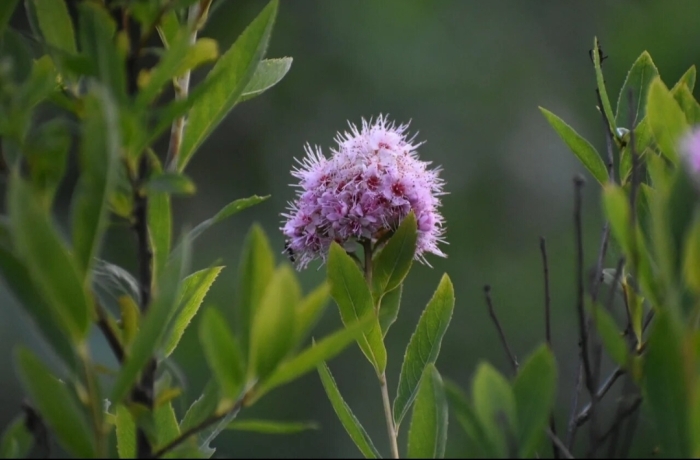Willow-Leaved Meadowsweet
(Spiraea salicifolia)
Willow-Leaved Meadowsweet (Spiraea salicifolia)
/
/

Валерия Ковалева
CC BY 4.0
Image By:
Валерия Ковалева
Recorded By:
Copyright:
CC BY 4.0
Copyright Notice:
Photo by: Валерия Ковалева | License Type: CC BY 4.0 | License URL: http://creativecommons.org/licenses/by/4.0/ | Rights Holder: Валерия Ковалева | Publisher: iNaturalist | Date Created: 2020-07-21T09:52Z |

























Estimated Native Range
Summary
Spiraea salicifolia, commonly known as willow-leaved meadowsweet, is a deciduous shrub native to a variety of habitats including wet meadows, stream banks, and forest edges in east-central Europe, Kazakhstan, Siberia, the Russian Far East, Mongolia, northern China, Korea, and Japan. It has been introduced to other parts of Europe and eastern North America. Willow-leaved meadowsweet typically grows to a height of 3-6 feet (0.9-1.8 meters) with a similar spread and features narrow, willow-like leaves. From June to July, it produces clusters of small, pink to white flowers that are attractive to pollinators.
This shrub is valued for its ease of maintenance and ability to thrive in a range of conditions, including wet soils. It is often used for naturalizing in wet areas, as a component of mixed shrub borders, or for erosion control along waterways. Willow-leaved meadowsweet prefers full sun to part shade and can tolerate a variety of soil types, provided they are moist. It is generally pest and disease resistant but can be prone to leaf spot and powdery mildew. Care should be taken when planting Spiraea salicifolia outside its native range, as it can become invasive and outcompete native vegetation.CC BY-SA 4.0
This shrub is valued for its ease of maintenance and ability to thrive in a range of conditions, including wet soils. It is often used for naturalizing in wet areas, as a component of mixed shrub borders, or for erosion control along waterways. Willow-leaved meadowsweet prefers full sun to part shade and can tolerate a variety of soil types, provided they are moist. It is generally pest and disease resistant but can be prone to leaf spot and powdery mildew. Care should be taken when planting Spiraea salicifolia outside its native range, as it can become invasive and outcompete native vegetation.CC BY-SA 4.0
Plant Description
- Plant Type: Shrub
- Height: 3-6 feet
- Width: 3-6 feet
- Growth Rate: Moderate, Rapid
- Flower Color: Pink, White
- Flowering Season: Summer
- Leaf Retention: Deciduous
Growth Requirements
- Sun: Full Sun, Part Shade
- Water: Medium
- Drainage: Medium
Common Uses
Bee Garden, Border Plant, Erosion Control, Groundcover, Low Maintenance, Showy Flowers, Street Planting
Natural Habitat
Native to wet meadows, stream banks, and forest edges
Other Names
Common Names: Willow spiraea, Willowleaf Spiraea, Willowleaf Meadowsweet
Scientific Names: , Spiraea salicifolia, Spiraea alba f. lanceolata, Spiraea alba var. lanceolata, Spiraea amena var. pauciflora, Spiraea amoena, Spiraea arguta, Spiraea carnea, Spiraea carpinifolia, Spiraea eximia
GBIF Accepted Name: